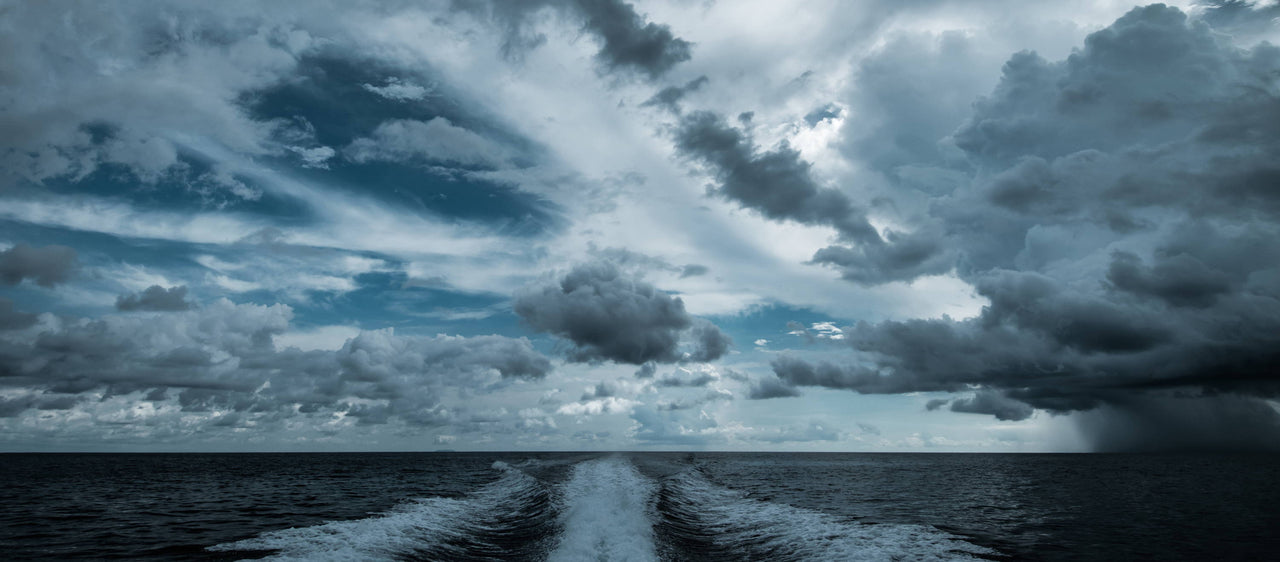Potential storm days have some great allure for many boaters. Though extreme weather may be near, the fishing can be incredible. And on the watersports side, the increasing wake may be extra fun for tubing or wakeboarding. In any case, it can sometimes feel far too cautious to stay off the water when there’s just a chance for adversity in the forecast. So when you’re looking to make the most of it, consider these 10 tips for safe boating when the weather might turn.

10 Tips for Safe Boating in Extreme Weather
How to Exercise Safe Boating Habits When There's Potential for Bad Weather
Most safe boating starts with the right knowledge and establishing good habits. The same is true for boating when there’s potential for bad weather. Sometimes adverse weather can really come out of nowhere and you just need to have the right information and tools to handle it. Other times, the danger can be avoided or reduced enough to enjoy the water when and where it makes sense. By following these tips, you should be ready for both circumstances and almost anything in between.
1. Check the Forecast Before You Go
In many areas around the U.S., you can get a good understanding of the weather ahead by checking the NOAA NWS Marine Weather Forecast. If you are in one of those regions, it is a must do.
In other areas, largely inland areas, your local news or localized weather app can give you a good look at what’s ahead. Of course, we all know how quickly this can change, especially in certain parts of the country, but it can be an easy first step to avoiding challenging conditions.
2. Make it a Habit to Watch for Bad Weather
The clouds could be getting thicker and decreasing in altitude. They could be getting darker. The temperature may be dropping and wind may be increasing and changing direction. Those may sneak up on you, but distant lightning and building waves are definite signs to increase how intentional you are about safe boating and gauging when to postpone a trip or head back in.
3. Resist the Urge to Just Gun It
When bad weather is about to hit, you’ll want to get home quick, but going Full Send isn’t covering all your bases. It can increase your risk at times, too. Instead, go at a safe speed to make good progress toward the shore and/or home and make sure you go through the rest of your extreme weather checklist.
4. Make Sure PFDs are On and Ready
Make sure life jackets are on and throwables are within reach in case they’re needed. Should anyone go overboard, this will help keep them above the waves and within reach.
5. Secure What’s Important
Children and pets top this list if they are on board, so consider moving them to the center of the boat, low and away from the edges. Also be sure to round up phones and important gear that could be at risk.
6. Turn Your Lights On
Even if it’s daytime and visibility isn’t at its worst, make sure your nav lights are on so other boats can see you. If it’s time to run back home to avoid bad weather, it’s a good time to do what you can to avoid collisions, too.
7. Head Toward the Nearest Safe Shore
Especially if the weather dangers are imminent (lightning, strong wind, low visibility), it’s likely that you are better off headed toward the nearest shore instead of cutting across open water, then you can make progress toward home as the conditions allow.
8. Control How Your Boat Hits the Waves
Some boaters say to go angled across waves at 45 degrees. Some say to go straight at them at 90 degrees. Others say to run alongside them. The truth is though that it all depends on the intensity of the waves: how high they are, how steep they are, how close they are together, whether they are rolling wind-driven waves or many smaller waves crashing together.
Despite the challenge of those variables, the main idea is that you want to keep your bow from getting buried in the waves and you want to keep your boat as even keeled as possible so it doesn’t flip or lose too much traction. Whether that means hitting waves at 45 degrees, 90 degrees, staying parallel or keeping an agile approach, you’ll want to be very intentional about your throttle control and your steering.
9. Run Bilges to Empty Water
When you take on water from rain or waves, you don’t want it to overwhelm your boat and reduce buoyancy to any critical level. As part of your first reactions to severe weather, be ready to run your bilges so you don’t get caught off guard by extra weight and reduced buoyancy when you take on too much water.
10. Deploy Anchors if Your Engine Fails and Signal for Help
Your first and best option here may be a drift anchor / sea anchor, but if your engine isn’t able to help you stabilize your boat, it may be time to deploy whatever anchors you can to help control how much you’re pushed by wind and waves. As soon as you’ve tried that, immediately call and / or signal for help.
Suggestions for Big Water and Big Boats
Big boats need solid safety procedures, too, and they have some special circumstances to consider. If you’re running a big boat and running on big water, consider this detailed article from the USCG.
Start Here for Safer Boating
For tips, gear, perspective from the pros, and more, be sure to browse safety gear from T-H Marine along with our growing collection of articles all about how you can optimize your boating fun and stay safe, too. That way you have all the tools you need for situations like bad weather, times when you need to keep your boat safe, launching at the ramp, and more.






